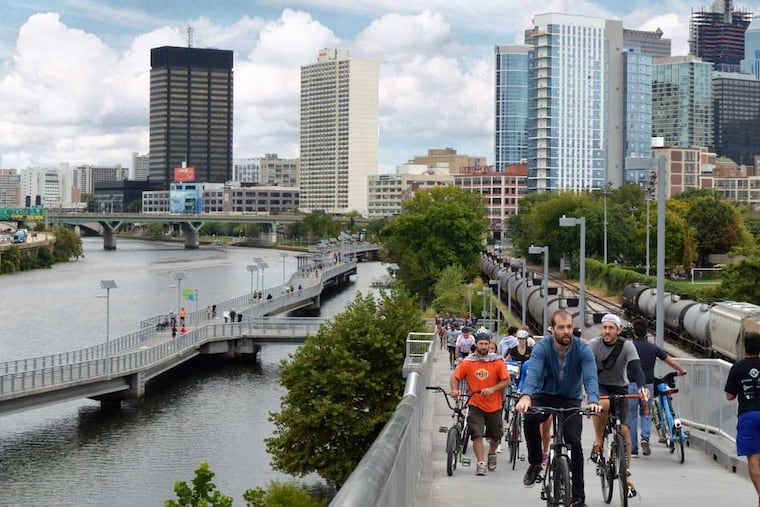What cities on Amazon shortlist have in common: a lifestyle appealing to tech workers | Changing Skyline
There's a reason that the 20 cities were chosen for the semifinals of Amazon's HQ2 search.

It's official: The Amazon HQ2 semifinals are upon us. Having whittled down the list of contender cities from the original 238 to 20, the retail conglomerate can now commence making its brackets. Let the handicapping begin!
On a serious note, there is not a lot of mystery about the list released by Amazon.com Inc. on Thursday. Once you examine the group, which features a heavy lineup of big East Coast cities, including Philadelphia, clear patterns start to emerge.
What the 20 have in common is that they have all worked hard to nurture lively, walkable downtowns and build quality public spaces for socializing. Virtually all boast good, multimodal transit systems and international airports that help network them into the larger world. They also are home to big universities. The early expectation had been that Amazon would stick to the country's tech capitals, but only a handful are real powerhouses.
While older, traditional cities like Philadelphia and New York never saw their downtowns emptied out, the list features several cities that have invested heavily in repopulating their centers. Despite its reputation as a sprawling, car-loving expanse of single-family homes, Los Angeles' downtown is booming with loft conversions and new high-rise apartment towers. Voters there recently approved billions for subways, parks and affordable housing. Maybe that's why it's the only West Coast city on Amazon's list.
Atlanta, another autocentric city, has similarly lured millennials into walkable enclaves on the edge of downtown, like the Old Fourth Ward and Cabbagetown, by linking them with its linear Beltline park. Indianapolis' Canal Walk has helped turn its downtown into a desirable neighborhood. Chicago has added to its already high-quality public spaces with its new Riverwalk, elevated 606 trail, and Millennium Park. Philadelphia has made its own huge strides in transforming its core neighborhoods with the construction of the Schuylkill River Trail.
In short, the 20 semifinalists "are all places where young tech workers would be willing to live," says John Landis, who teaches city planning at the University of Pennsylvania. "Ten years ago, Nashville would have never made the list."
That's probably true for Philadelphia, too.
Certainly, some of the cities that failed to make the cut, such as Vancouver and Charlotte, have followed similar strategies. But for the most part, Amazon weeded out cities too small or too sprawling to offer the level of urbanism the company demanded in its request for proposals. The entire population of Holyoke, Mass., could fit in Amazon's Seattle campus. How could it ever host 50,000 new Amazon employees? Tucson, Ariz., may have tried to woo Amazon's Jeff Bezos with a giant cactus, but it has virtually no mass transit.
Several handicappers pointed out that the Washington metro area has the best odds of winning because it effectively secured three spots on Amazon's list: Washington, Northern Virginia, and Montgomery County, Md. Plus, Bezos owns the Washington Post and a house in the district.
And what of Philadelphia's chances? Perhaps we should all follow the example of Eagles tackle Lane Johnson and start donning dog masks. Occasionally underdogs come out on top.